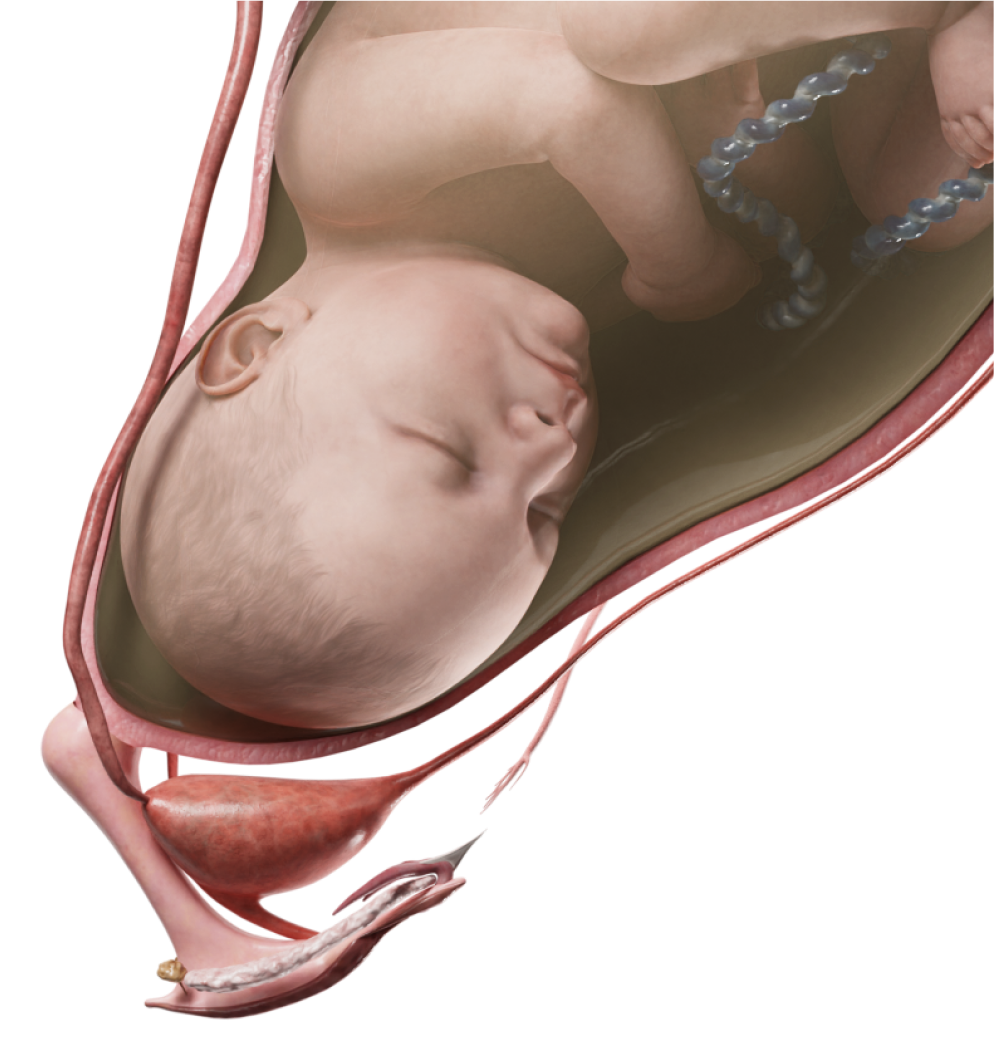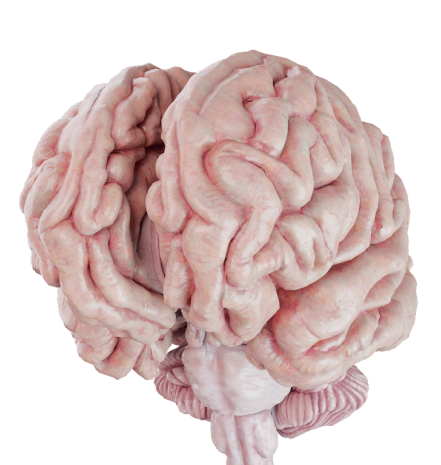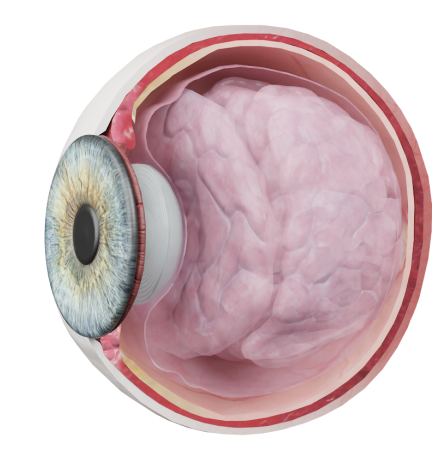Traumatic brain injury
A traumatic brain injury (TBI) refers to a brain injury that results from damage to the bones of the calvaria or cranial base. The condition is caused by external mechanical forces applied to any region of the head.
Epidemiology
Nowadays, TBI tends to affect younger, able-bodied people and demonstrates high disability and death rates. From an economic standpoint, these patients create a significant burden on the healthcare system during their recovery. Annually, around 27 million new TBI cases are reported worldwide, with an incidence of 400 cases per 100,000 people.
TBI may be categorized by age:
- Infant TBI (frequently associated with falls);
- Adolescent and adult TBI (primarily caused by road traffic accidents);
- Advanced age TBI (also attributed to falls).
TBI is also a gender-specific condition: on average, males are twice as prone to the trauma as females.
TBI is a severe condition with a high death rate of approximately 10 cases per 100,000 people. Note that around 70 % of patients pass away before they can receive qualified medical care.
Etiology
Below you can find a list of the most widespread TBI etiologies:
- Falls (40–50 % of all head injuries);
- Road traffic accidents (20–30 % of all head injuries);
- Intentional bodily harm;
- Occupational injuries.
Different etiologies may account for a different number of TBI cases depending on a country’s income, geography, and political situation in the region.
Pathogenesis
Various mechanical factors, including coup-countercoup and acceleration-deceleration forces, may cause two types of primary brain injury: focal and diffuse.
A focal lesion in the brain develops as a result of a coup-countercoup injury. The coup injury occurs when a mechanical force impacts the stationary skull. The damage covers the area under the contact point with a traumatic agent and affects the soft tissues of the head, bones of the cranium, and brain. The countercoup injury means that the damage to the brain develops on the side opposite to the injury. This happens due to certain biophysical features of the skull that trigger a short-term pressure drop and cavitation processes in the countercoup area. This mechanism is responsible for traumatic intracranial hemorrhage, cerebral contusions, skull fractures, and traumatic subarachnoid hemorrhage.
Acceleration and deceleration forces may alternate and cause microtraumas in the area connecting the cerebral hemispheres and brainstem. This mechanism is to blame in case of concussions and diffuse axonal injury (DAI).
Classification
- By biomechanical impact:
- Coup-countercoup;
- Acceleration-deceleration.
- By injury type:
- Focal — caused by coup-countercoup forces;
- Diffuse — caused by acceleration-deceleration forces.
- By trauma type:
- Open: with damage to aponeurosis;
- Closed: without damage to aponeurosis;
- Penetrating: damage to dura;
- Nonpenetrating: no damage to dura.
- By severity (Glasgow Coma Scale — GCS):
- Mild (GCS 13–15);
- Moderate (GCS 9–12);
- Severe (GCS 3–8).
- Clinical forms:
- Concussion;
- Cerebral contusion:
- Mild;
- Moderate;
- Severe.
- Diffuse axonal injury;
- Cerebral compression (acute, subacute, chronic).
- By recovery (Glasgow Outcome Scale — GOS):
- Upper Good Recovery (GR +) — complete functional recovery;
- Low Good Recovery (GR –) — minor neurological deficits that do not interfere with everyday life;
- Upper Moderate Disability (MD +) — possible change of occupation or job placement with special arrangement;
- Low Moderate Disability (MD –) — partial impairment of self-care;
- Upper Severe Disability (SD +) — significant neurologic deficits necessitating total care;
- Low Severe Disability (SD –) — total care in intensive care units (ICUs);
- Vegetative State (VS) — sleep and wake cycles preserved, no sign of consciousness and reaction;
- Death — fatal outcome.
Clinical Manifestations
TBI symptoms may vary greatly. Specific manifestations should be assessed based on the severity of the damage inflicted and the localization of the focus relative to the key functional areas of the brain.
Depending on the TBI grade, patients may lose consciousness for a few seconds to a few days, or even weeks.
Direct brain injuries trigger various neurologic deficits that may be classified into nonfocal, focal, brainstem, and meningeal symptoms.
Nonfocal neurologic signs encompass headaches, impaired consciousness, dizziness, and vomiting. These symptoms are caused by changes in intracranial pressure, leading to either intracranial hypertension or hypotension.
By contrast, focal neurologic signs develop due to local damage to certain brain areas responsible for a specific function. These include:
- Mental disorders (if the basal parts of the frontal lobes are affected);
- Paresis or paralysis (if the motor cortex or corticospinal tracts are affected);
- Sensory dysfunction (if the postcentral gyrus or sensory pathways are affected);
- Aphasia (if Broca's and Wernicke's areas are affected);
- Visual field loss (if the occipital lobes or optic radiation is affected).
Brainstem neurologic signs in TBI are caused by damage to the midbrain. As the caudal nuclei of the nerves at the level of the brainstem are affected, oculomotor disorders and bulbar palsy may develop, including dysphonia, dysarthria, and dysphagia.
Basal cerebral contusion, massive intracranial hemorrhage, or basilar skull fractures may damage the hypothalamus and impair its functioning. The conditions may be identified by serum osmolality deviations and autonomic instability.
Meningeal symptoms, including nuchal rigidity, pathological meningeal signs, tenderness during head percussion, and general hyperesthesia, develop due to intracranial hemorrhage that irritates the meninges.
Diagnosis
Medical history is the first and the most crucial step in diagnosing TBI. At this stage, the primary task for a healthcare professional is to determine how a patient was injured (a fall, blow, or road traffic accident) and how much time has passed since the trauma. Understanding the injury mechanism makes it possible to predict which focal or diffuse brain injuries may develop. For instance, a blow with a heavy object may lead to skull fractures, whereas a road traffic accident involving an acceleration-deceleration mechanism is responsible for a diffuse axonal injury.
Physical examination is one of the key components of differential diagnosis when TBI or other urgent neurosurgical conditions affecting the brain are suspected. It aims to identify any signs of a head trauma, such as abrasions, hematomas, or contused wounds. A thorough check-up can also help rule out polytraumas that are common in this group of patients and pose a higher risk to a patient’s well-being. Still, a healthcare professional should focus most on a patient’s state of consciousness, classified as follows:
- clear/normal;
- moderate obtundation;
- severe obtundation;
- stupor;
- coma (moderate, deep, transcendental).
To assess a patient’s level of consciousness within a short timeframe, neurosurgeons employ the Glasgow Coma Scale (GCS). It allows them to perform a quick check-up right in the emergency room and to choose a proper treatment approach. The GCS score is an important determinant of mortality: the level of consciousness between 3 and 8 in a TBI patient predicts a mortality rate of 60 %.
The Glasgow Coma Scale comprises three integral categories: eye, verbal, and motor responses.
Eye response (E):
- Eyes opening spontaneously — 4;
- Eyes opening to sound — 3;
- Eyes opening to pain — 2;
- No eye response — 1.
Verbal response (V):
- Orientated, correct, and prompt response — 5;
- Disoriented response, confused conversation — 4;
- Inappropriate words unrelated to the question asked — 3;
- Incomprehensible sounds — 2;
- No verbal response — 1.
Motor response (M):
- Obeys commands — 6;
- Localizes pain (pushing) — 5;
- Withdrawal from pain — 4;
- Abnormal flexion to pain — 3;
- Abnormal extension to pain — 2;
- No motor response — 1.
When summed up, the GCS is scored between 3 and 15, where 3 represents the most severe level of impaired consciousness, and 15 indicates full consciousness. This scale makes it possible to convert a quantitative criterion (a score) into a qualitative one (level of consciousness):
- 15: clear consciousness;
- 14–12: moderate obtundation;
- 10–11: severe obtundation;
- 10–8: stupor;
- 7–6: moderate coma;
- 5–4: deep coma;
- 3: transcendental coma.
TBI patients should have routine laboratory tests done, including a complete blood count (CBC), blood tests, coagulation panel, urinalysis, blood type and Rh-factor testing. Apart from aiding in diagnosis, these tests are used to evaluate a patient's condition, identify comorbidities (if any), and prepare for potential surgery.
Instrumental methods to diagnose TBI comprise:
- Computed tomography (CT): This technique is a highly time-efficient method that demonstrates advanced sensitivity and specificity. No wonder it has become the gold standard for managing TBI patients. This type of imaging helps detect skull fractures, cerebral contusions, intracerebral hemorrhage, and pathological alterations in air-filled spaces. It can also provide indirect hints about when a patient was injured. Various types of CT scans are used depending on clinical needs, including unenhanced CT, CT angiography, CT cisternography, etc.
- Magnetic resonance imaging (MRI): This procedure scans soft tissues and brain tissues in superior quality, without exposing patients to radiation. Although MRI is a costly and time-consuming technique, in some cases it may still be more advantageous than CT. For instance, MRI is an effective tool to identify various stages of intracranial hemorrhage and other brain injuries. It is the primary choice for diagnosing diffuse axonal injury. Via specialized sequences (T1, T2 FLAIR, ADC, DWI, TOF, etc.), MRI helps assess the cerebrospinal fluid circulation with higher precision. However, the method has its limitations and is not as effective as CT for assessing traumatic damage to the cranial bones.
- Lumbar puncture: This supplementary method is utilized to identify subarachnoid hemorrhage, measure cerebrospinal fluid pressure, and rule out any TBI complications such as meningitis, meningoencephalitis, or ventriculitis. Lumbar puncture may also serve as a treatment option to drain the cerebrospinal fluid and administer medicinal products intrathecally.
- Neuroendoscopic methods: These techniques are intended to rule out potential liquorrhea (cerebrospinal fluid leakage) and examine the intracranial spaces and cavities during surgery to ensure there is no ongoing bleeding.
Treatment
To cope with a traumatic brain injury, a healthcare professional should consider its severity, clinical features, the patient’s level of consciousness, and cerebral edema (if any). In general, the condition may be treated either medically or surgically.
Medical TBI treatment is primarily symptomatic and aims at managing cerebral edema and controlling intracranial pressure.
Primary groups of medications:
- Nonsteroidal anti-inflammatory drugs (NSAIDs): Utilized for pain management in conscious patients.
- Antibiotics: Antibiotic drugs of various groups and generations (β-lactams, aminoglycosides, macrolides, etc.) are used to prevent purulent complications in patients with an open or penetrating TBI, as well as those suffering from posttraumatic purulent meningitis. Effective antibiotic therapy requires agents that can cross the blood-brain barrier (BBB). The therapy may be administered systemically, intrathecally, or intraventricularly.
- Anticonvulsants: In patients with focal brain damage that can induce seizures, carbamazepine and valproic acid are preferred.
- Osmotic diuretics: Sorbitol and mannitol may be useful to reverse cerebral edema in severe TBI. These drugs may be administered in combination with loop diuretics, such as furosemide.
- Barbituates: Combined with controlled hypothermia and artificially induced hypercapnia (also referred to as hypercarbia or CO2 retention), these drugs help reduce intracranial pressure.
Unlike the conservative approach, surgery eliminates any triggers of acute or chronic cerebral compression. The exact management strategy depends on a patient’s level of consciousness, trauma timing, and neuroimaging studies.
Surgical options:
- Decompressive hemicraniectomy: Employed in severe TBI patients in critical condition to alleviate symptoms of cerebral compression and to prevent cerebral edema or brain herniation.
- Craniotomy combined with autocranioplasty: Acute cerebral compression in conscious patients requires the causative agent to be removed, followed by single-stage autologous cranioplasty.
- Subdural drainage: In chronic cerebral compression (e.g., caused by chronic subdural hematomas), one or two burr holes are made to drain the hematomas. Then, a closed drainage system is inserted.
However, surgery is contraindicated in patients with severe TBI that score only 3 on the GCS (Glasgow Coma Scale).
This is due to high mortality rates and the risk of profound disability.
Therefore, traumatic brain injury requires a comprehensive treatment approach covering both medical and surgical aspects, considering the patient’s condition and trauma features.










